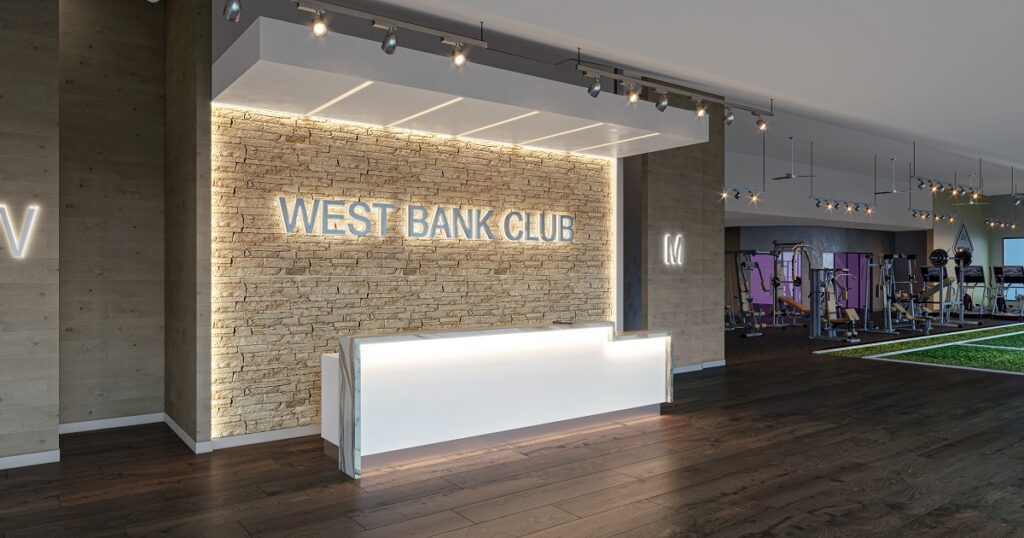The Future of Health and Fitness Club Design
As Seen in the Recent Article by Club Insider Online Magazine
In planning any size new club or renovation, taking the time to contemplate what the future holds for club design is a valuable step. Often, past trends can help to provide some insight into the future. However, the club industry’s most recent past was totally dominated by COVID, causing clubs to close (25% of clubs closed permanently according to a recent IHRSA study), then clubs were allowed to reopen with abnormal spacing requirements.
So, will COVID strongly impact the future of club design? The primary answer is no, but the effect on the economy from COVID will continue to have an effect on club design now and in the future.
One might think that with the social distancing past experience, clubs of the future would be larger in size to account for more space and future possible viruses. This seems not to be the case as the variables affecting club design and size in the future will not be directly related to viruses. However, it also should be noted that any new design should incorporate post-COVID ventilation-related strategies as part of any HVAC system.
It seems that clubs are getting smaller.
- Boutique-style, studio-sized specialized fitness clubs in the 1,500 to 3,500 square-foot range have continued to grow whether part of major chains or individually created operations.
- Now, studios are starting to grow in size, referring more to themselves as “clubs” and more in the 3,500 to 8,000 square-foot range.
- These offer a combination of regular health club memberships, small group, and personal training.
Another factor affecting club design (and size) is rising construction costs.
- Any size new club or renovation will cost a minimum of 20% more than it did two years ago. It takes a combined effort by owners, architects/designers, and contractors to get more for fewer dollars.
- Solutions include prioritizing what expenditures are more needed than others, especially those that will directly impact sales and retention.
More clubs in the future will offer unisex locker/bathroom areas.
- This saves space and construction dollars, and if designed properly, can provide as much privacy as separate locker rooms.
- These areas are beautifully finished with private bathrooms, showers, changing rooms, and a common area locker section.
Clubs have always offered physical health, but the concept of mental health and relaxation is a hot topic.
Recovery offerings in spa-like environments such as HydroMassage, cold therapy (in the form of pools, chairs, or cryotherapy units), relaxation pods, red light therapy, IV therapy, compression sleeves, and even massage guns will increasingly find their way into clubs. Often, these are designed to produce more revenue and should be strongly considered.
A seemingly small but very important future design trend should be:
- To incorporate large storage areas off to the side of any group exercise room.
- The days of filling the perimeter walls of a group exercise room with class training items should be totally avoided.
- All group exercise rooms should have these types of storage areas to allow for a beautiful “feng shui,” clutter-free space.
Younger members in the 18 - 40-year-old age group are increasingly looking for better strength training options.
- Such as multipurpose power racks, platforms, multipurpose cable units and extensive storage racks for everything from kettlebells to mats and stability balls should be planned for.
- This may even reduce space for cardio and machines.
- Larger “open space” areas (such as turf areas) will become even more common.
Technology shall continue to play a stronger role in clubs.
- Requiring well-planned spaces for monitors that show class schedules, health education, and other program offerings.
- Visible technology systems need to be an attractive design statement for clubs.
- Well-thought-out “selfie” walls and virtual fitness areas should be part of a club’s social media and marketing program.
One of the most significant trends in how an interior is experienced is dramatic lighting.
- Lighting is the single biggest design change in club environments and can add drama, excitement, and even relaxation.
- Lighting options include cove, colored, theatrical, pendants, sconces, and LED strip lighting. More renovations will involve substantial lighting changes.
Larger size clubs will make a comeback, yet successfully planned smaller clubs will be part of the future of club design. In an ever-increasing way, the interior finishes of clubs will continue to evolve with more and more emphasis on quality interiors.
Clubs have always been about the workout. However, increasingly so in the future, clubs will be a sanctuary for social interaction, mental self-improvement, and even a place to work away from home.
Club design in the future will increasingly differentiate health clubs from any other spaces in the market. They will be a uniquely special place for people to improve their lives.
To access the Club Insider online article for April 2023.
Want to discuss your project with an experienced health club designer? Call 954.888.5960 or Schedule Free Consultation
Keep in Touch!


